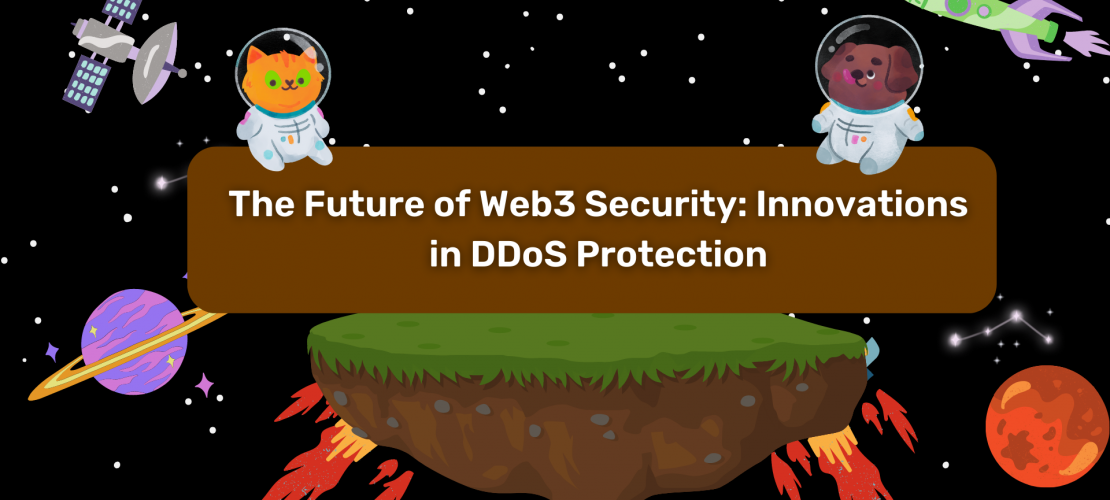The world of web3 and decentralized systems is growing rapidly, with more and more applications being built on blockchain technology. While this brings many benefits, such as increased transparency and decentralization, it also introduces new security challenges, including the threat of distributed denial-of-service (DDoS) attacks. As web3 continues to evolve, it’s important to explore the future of DDoS protection and the innovative solutions that will be needed to keep these systems secure.
DDoS attacks are a type of cyber attack in which an attacker floods a target server or network with a large amount of traffic, overwhelming its capacity and causing it to become unavailable to users. In the context of web3, DDoS attacks can be particularly damaging as they can prevent users from accessing important decentralized applications and services. This can be especially problematic in areas such as decentralized finance (DeFi), where users may have significant amounts of money at stake.
So, what does the future of DDoS protection look like in the world of web3? Let’s take a look at some of the key trends and innovations that are emerging in this space.
1) Decentralized DDoS Protection
One of the core tenets of web3 is decentralization, and this is also true when it comes to DDoS protection. In a decentralized system, there is no central point of failure, which means that it’s more difficult for attackers to take down the entire network with a DDoS attack. Some decentralized DDoS protection solutions are already available, such as DDoS-Guard, which uses a network of decentralized servers to absorb and mitigate attacks. As web3 continues to evolve, we can expect to see more decentralized DDoS protection solutions emerge.
2) AI and Machine Learning
As DDoS attacks become more sophisticated, it’s important for DDoS protection solutions to evolve as well. One emerging trend in this space is the use of artificial intelligence (AI) and machine learning (ML) to detect and mitigate attacks in real-time. These technologies can analyze network traffic patterns and identify anomalous behavior that may indicate a DDoS attack is underway. They can then automatically adjust network settings to mitigate the attack.
3) Blockchain-based Protection
Blockchain technology is at the core of web3, and it can also be used to provide DDoS protection. By leveraging the security and transparency of the blockchain, DDoS protection solutions can provide a high degree of resilience and resistance to attacks. For example, the blockchain-based DDoS protection service Gladius uses a decentralized network of nodes to distribute traffic across multiple nodes, making it more difficult for attackers to target a single point of failure.
4) Edge Computing
Edge computing is a distributed computing paradigm that brings compute resources closer to the edge of the network, rather than relying on centralized servers. This can help to reduce latency and improve performance, but it can also provide benefits for DDoS protection. By distributing compute resources across the network, edge computing can make it more difficult for attackers to target a single point of failure. Additionally, edge computing can be used to dynamically adjust network settings in response to DDoS attacks, helping to mitigate their impact.
5) Quantum-resistant Encryption
As quantum computing technology continues to advance, traditional encryption methods may become vulnerable to attacks. This is particularly concerning in the context of web3, where security is paramount. To address this issue, quantum-resistant encryption methods are being developed that can withstand attacks from quantum computers. By using these encryption methods, web3 systems can ensure that they remain secure even in the face of advances in quantum computing technology.
Conclusion,
the rise of Web3 technologies has created new opportunities and challenges for online security. DDoS attacks remain a significant threat to the availability and integrity of web services and applications. However, emerging innovations in DDoS protection, such as blockchain-based solutions, decentralized cloud networks, and AI-driven threat detection, offer promising avenues for enhancing the security and resilience of Web3 systems. As the Web3 ecosystem continues to evolve and expand, it is crucial for developers, businesses, and users to stay vigilant and proactive in safeguarding against DDoS attacks and other cyber threats. By investing in robust security measures and keeping up with the latest trends and best practices, we can help ensure a safer and more secure future for Web3.




